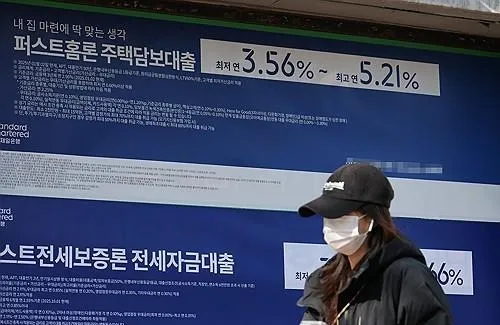Why Did Banks' Lending Rates Decrease in South Korea Despite Rising Mortgage Rates?

Synopsis
Key Takeaways
- Overall lending rates decreased slightly in October.
- Mortgage rates increased due to tighter lending regulations.
- The average interest rate for new loans is now 4.02%.
- Corporate loan rates fell for the fifth consecutive month.
- The BOK has reduced the key interest rate to 2.5%.
Seoul, Nov 26 (NationPress) In October, the overall lending rates of banks experienced a slight decline amid the central bank's monetary easing strategy, despite a rise in mortgage rates due to stricter lending regulations by authorities, according to data released on Wednesday.
The average interest rate for new bank loans dropped to 4.02 percent last month, a decrease of 0.01 percentage points compared to September, based on information from the Bank of Korea (BOK), as reported by Yonhap news agency.
Breaking it down by sector, the average rate on corporate loans decreased by 0.03 percentage points to 3.96 percent in October, marking the fifth month in a row of declines.
Conversely, the rate for new household loans increased by 0.07 percentage points to 4.24 percent, as both home-backed mortgage loans and jeonse loans rose by 0.02 percentage points each.
A BOK official stated, "Although general credit loan rates fell by 0.12 percentage points to 5.19 percent, the proportion of loans with relatively higher interest rates has grown, resulting in an overall increase in household loan rates."
Jeonse represents a distinctive rental system in South Korea, where tenants provide a substantial lump-sum deposit, which is fully refunded at the end of the lease.
The increase in mortgage rates is attributed to the government's implementation of stricter lending rules aimed at cooling the overheated property market and controlling household debt.
The average rate for fresh deposits at banks rose by 0.05 percentage points to 2.57 percent, marking the second month of consecutive increases.
The gap between banks' outstanding lending and deposit rates narrowed by 0.01 percentage points to 2.18 percentage points last month, according to the data.
The BOK began its monetary easing cycle in October 2024, reducing the key interest rate by 0.25 percentage points to 3.25 percent.
Since then, the rate has been adjusted down to 2.5 percent to bolster economic growth.
At its most recent rate-setting meeting last month, the central bank decided to maintain the benchmark rate unchanged for the third consecutive meeting to ensure financial stability in light of increasing household debt and uncertainties related to U.S. tariff policies.
The next policy meeting is scheduled for Thursday.









